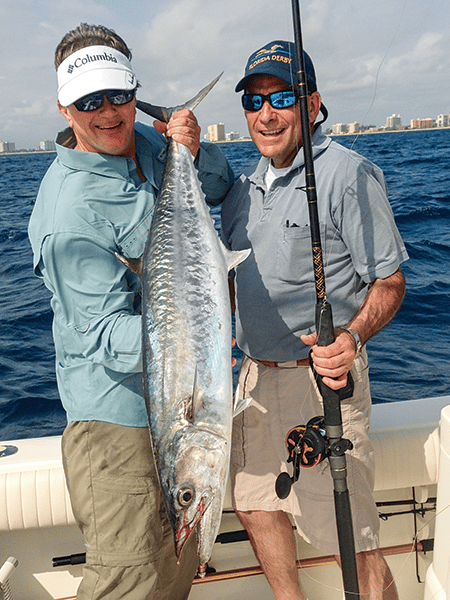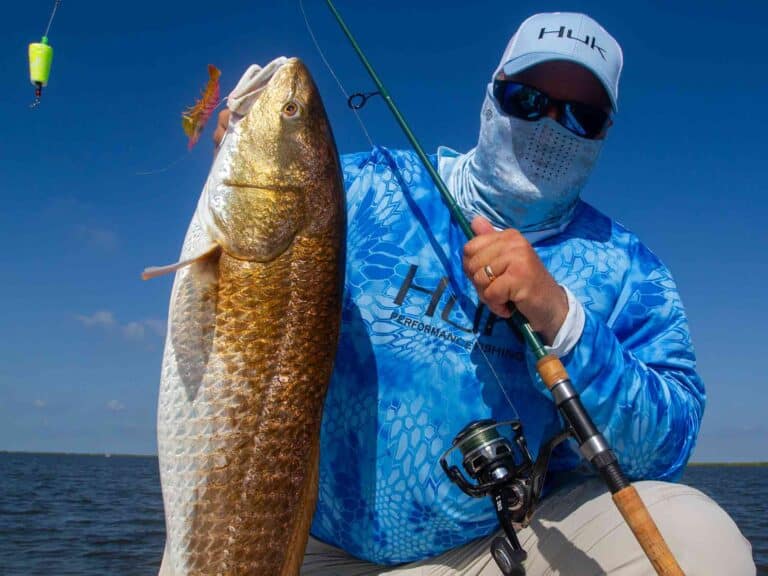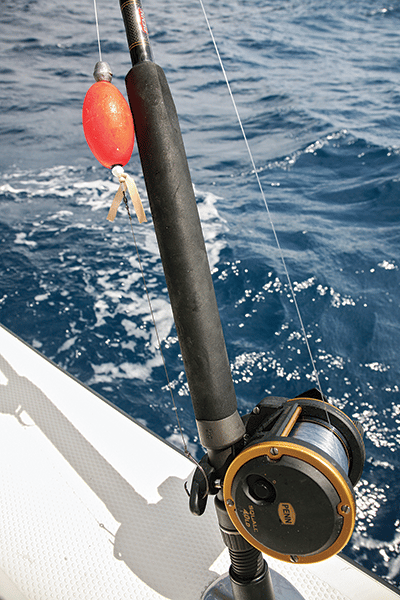
Wind-on leaders are a huge advantage. Their length safeguards the lighter fishing line from breakage, should a fish become wrapped in it, jump and fall back onto it, or hit it with its tail. Winding a leader onto the reel, the angler maintains consistent pressure on a fish right to the boat: There’s no wiring to disrupt that rhythm and prompt a fish to surge, sound, or even pull or straighten the hook. Gaffing or billing and releasing a big fish have never been easier than with wind-on leaders.
I use wind-on leaders on both my spin and conventional tackle when live-baiting, offshore trolling, and when casting to certain game fish. However, when kite-fishing for sailfish, I’ll use an independent leader that’s 12 to 15 feet long, attached to the main line with a small snap swivel. Above that snap swivel sits a small sinker and a marker float. The long leader not only protects the 20-pound-test line from contact with the fish, but is easier to grab or wind to the rod tip for a “legal release.” After the score, the fish can be pressured more, leadered to the boat, then revived and released.
But there is a downside to a long kite leader. When a big blackfin tuna, dolphin, wahoo, kingfish or some other fish you’d like to boat is hooked, someone must capture that leader and hand-line the fish to the gaff. It’s a tedious undertaking that sometimes results in a loss, yet shortening that same leader to 5 or 6 feet makes the line too vulnerable to large or acrobatic fish.

Sliding Solution
Capt. Bouncer Smith, arguably the most productive charter captain in Miami, is known for his innovative rigging and techniques.
Smith specializes in kite-fishing for a variety of reef and offshore fish. He opts for 18-foot leaders on the kite rods, and rigs so his clients can reel a fish right to the boat without anyone touching the leader. When it’s time to deploy, the sinker and float slide up to the top of the 18-foot leader, ready to fish. When it’s time to pack up, the sinker, float, and short wire trace with the hook stow securely within inches of the reel seat.
The components required to assemble the adjustable wind-on leader include an egg sinker (for ballast to keep small kite baits, like pilchards and herring, in the water), a brightly colored kite float (for visual reference), a small plastic bead, and a piece of a No. 64 rubber band (to act as adjustable stopper). Smith often adds a foot of metallic leader to the main leader with a small barrel swivel.
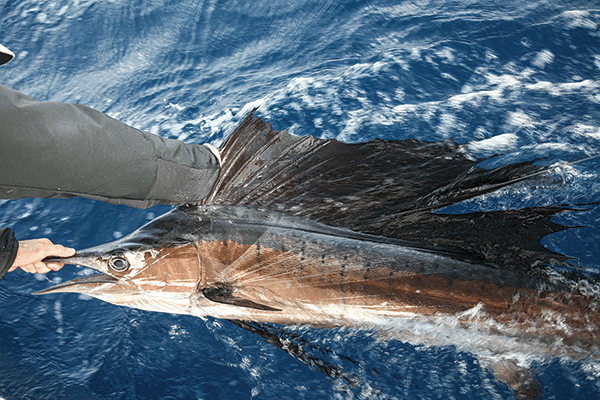
Set It Out
When deploying the rig, put the reel in free-spool, engage the clicker, and hold the rubber-band knot as you pull off line. The entire float-and-weight setup should slide up the leader and stop at the knot joining it to the double line. Attach the fishing line above the leader to the kite clip. Hook the bait, pitch it out, and free-spool it into position with the kite. Once deployed, the float remains highly visible, roughly 18 feet above the bait swimming at the surface.
When fighting a sailfish, Smith uses that 18-foot advantage to initially go for the legal release, winding the long leader to the rod tip. When a sailfish is tuckered enough to come boat-side, or a food fish is destined for the gaff, the angler reels in without stopping for the float and sinker. The pressure against the rod tip forces the rubber-band knot to slide down the leader, along with the float and sinker. In a smooth and uniform motion, nearly the entire 18-foot leader winds onto the reel, delivering the fish right to the boat.
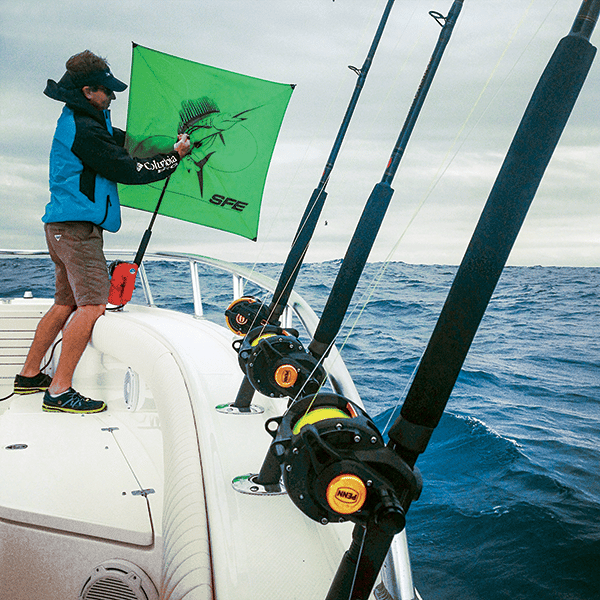
On the Bottom
Smith uses the same system — minus the float — on his deep flat lines. He slides the rubber band, plastic bead and egg sinker right to the knot joining the double line to the 18-foot leader. When a fish is played up, the sinker retracts down to the metallic leader or hook. Selecting a weight for the deep lines depends on the drift and current, but often a 2- to 6-ounce egg sinker does the trick.
The next time you set out the kites or deep-drift baits, try the adjustable wind-on leaders. You’ll get fewer break-offs, gain more legal releases on billfish, and bring more food fish to gaff. What’s not to like about that?
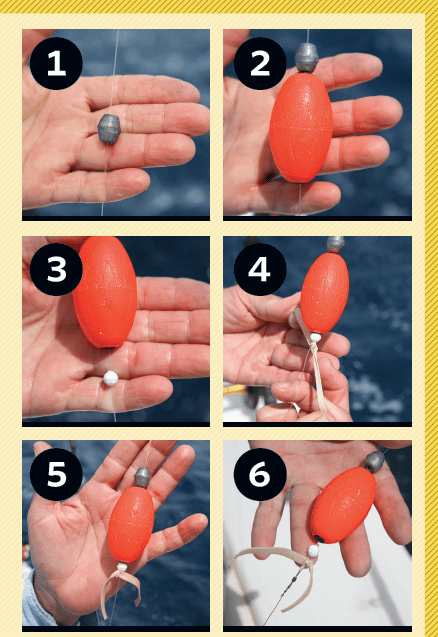
Step One: Tie a Bimini twist to form a double line and attach it to a 15- to 18-foot length of fluorocarbon or mono (40- or 50-pound) with a Bristol Knot. Slip a small egg sinker onto the leader (1⁄2 to 2 ounces, based on bait size).
Step Two: Slide a hi-vis float onto the leader, below the sinker.
Step Three: Add a small plastic bead to keep the rubber-band knot from jamming in the float.
Step Four: With a Double Overhand Knot, tie half a No. 64 rubber band around the leader as a stopper for the bead, float, and weight.
Step Five: Make sure the rubber band knot is secure enough to stay tied, but still able to slide up and down the leader under pressure. step six: If toothy fish are in the mix, attach a small barrel swivel to the end of the leader, and add a short wire trace.
